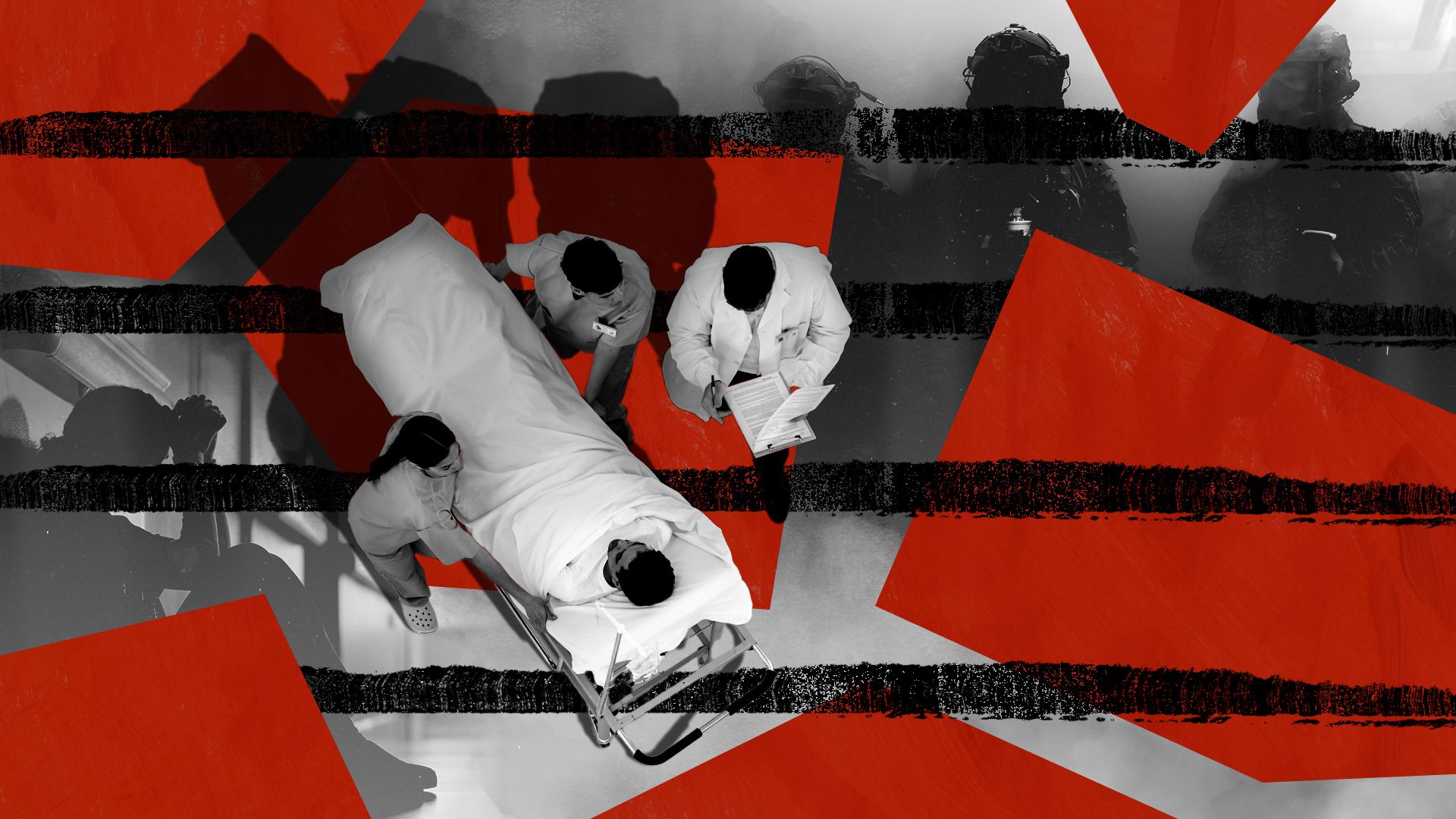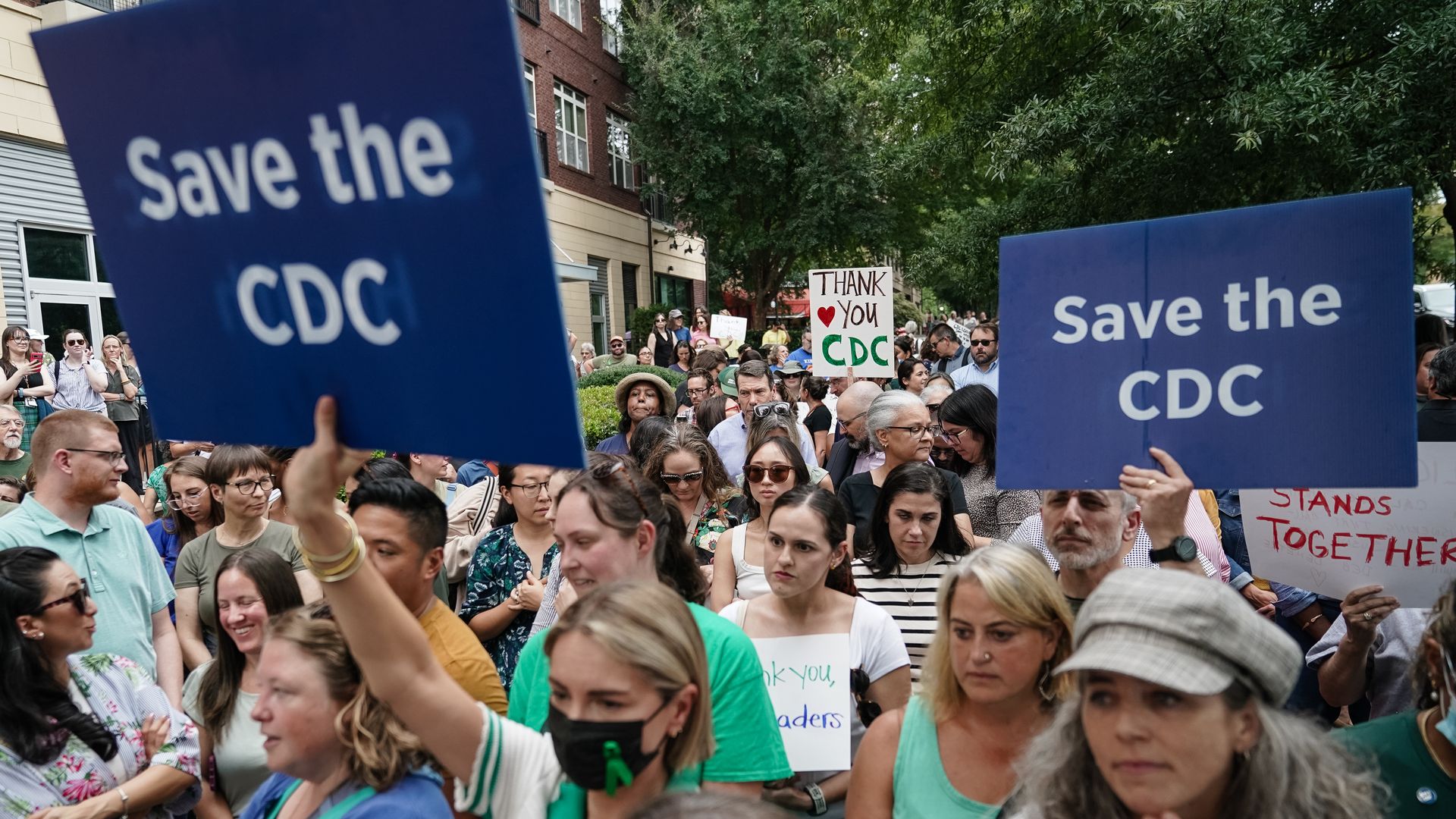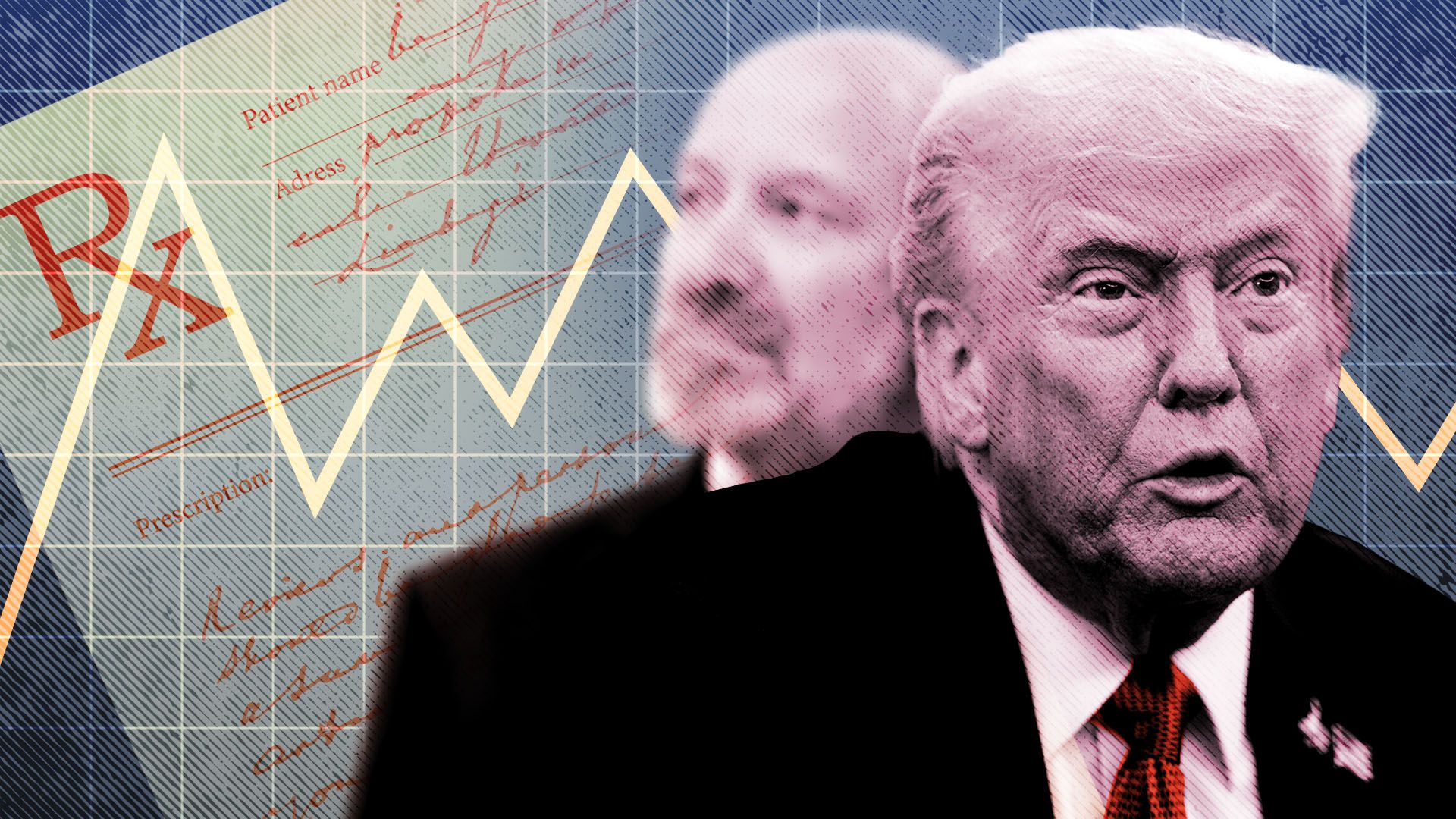|
||
| PRESENTED BY THE COALITION TO STRENGTHEN AMERICA’S HEALTHCARE | ||
| Axios Vitals | ||
| By Tina Reed, Maya Goldman and Peter Sullivan · Oct 14, 2025 | ||
|
Welcome back to the workweek. Today's newsletter is 1,107 words, a 4-minute read.
|
||
| 1 big thing: Immigration crackdown alarms hospitals | ||
| By Tina Reed | ||

|
||
|
Photo illustration: Aïda Amer / Axios. Photo: Spencer Platt / Getty Images |
||
|
The Trump administration's rollback of a policy that prohibited immigration enforcement in hospitals is sparking fear and confusion in exam rooms and emergency departments amid a surge in ICE arrests. Why it matters: Health care workers say stepped-up enforcement is interfering with care in some instances, and lawyers say it has created enough privacy concerns that some are erasing whiteboards on patient floors and concealing medical records.
State of play: A Homeland Security Department directive in January rescinded a Biden administration policy that designated hospitals, schools and churches "sensitive locations" that were off limits to immigration enforcement.
Zoom in: The stakes were driven home by physicians at a Los Angeles hospital who told LAist that ICE personnel interfered with the care of a detainee. Medical personnel were not able to call the patient's family, even to find out health history, and agents refused to leave during confidential medical conversations. |
||
|
|
||
| 2. CDC purge hits 600 workers in key offices | ||
| By Adriel Bettelheim, Tina Reed and Maya Goldman | ||

|
||
|
Employees and supporters of the CDC honor former officials in August. Photo: Elijah Nouvelage / Getty Images |
||
|
If you had trouble keeping track of the state of the CDC after this weekend's mass layoffs followed by abrupt reversals of many terminations, our reporting shows that about 600 agency employees will end up out of work.
Why it matters: Although more than half of the roughly 1,300 notices originally sent to the agency workforce have been rescinded, the upheaval from the layoffs that are still taking effect could undermine efforts to protect public health.
Driving the news: The cuts have hit offices including the National Center for Injury Prevention and Control, the National Center for Health Statistics and the CDC's Washington office, which is the channel for communications with Congress, sources said.
|
||
|
|
||
| 3. How a tariff push complicated Trump's pharma plan | ||
| By Marc Caputo and Alex Isenstadt | ||

|
||
|
Photo illustration: Sarah Grillo / Axios. Photos: Jordan Pettitt - WPA Pool and Aaron Schwartz / CNP / Bloomberg via Getty Images |
||
|
Prescription drug policy and tariffs are big priorities for the Trump administration. But after the two issues collided in a conflicting series of White House messages recently, President Trump set aside the tariffs idea, which could have made drugs more expensive for many Americans. Why it matters: Trump's uneven management style — particularly surrounding tariffs — shadows a White House in which policies can be made on the fly, change suddenly at the president's whim, and then be fine-tuned as conflicts are resolved in real time. Friction point: Trump Cabinet secretaries sometimes operate with such independence that they encroach on one another's turf.
At 7:24pm, Trump posted that he'd impose the 100% tariff on prescription drugs produced outside the country.
|
||
|
|
||
|
A MESSAGE FROM THE COALITION TO STRENGTHEN AMERICA’S HEALTHCARE |
||
| Care that doesn’t clock out — on rounds or on call | ||
|
|
||
|
Tell Congress: Protect Access to 24/7 Care — because when the doors close, it is too late. More than 300 hospitals are now at risk of closure, threatening access to critical care. We’re here to heal, but we need your help to stay here. |
||
| 4. Supplements in the RFK Jr. era aren't in the clear | ||
| By Ashley May | ||

|
||
|
Photo illustration: Allie Carl. Photo: Win McNamee / Getty Images |
||
|
Kennedy has been portrayed as dietary supplements' savior, but his FDA plans may not go down easy for the industry. Why it matters: Kennedy has directed FDA to require review of the "Generally Recognized as Safe" (GRAS) standard — a process companies use to affirm that a substance is safe to eat or consume without needing full agency approval. Potential changes, which are being closely watched by food manufacturers, will also impact companies making supplements.
What they're saying: Natural Products Association CEO Daniel Fabricant says the proposal could drive up supplement prices and limit consumer choice. |
||
|
|
||
| 5. While you were weekending | ||

|
||
|
Illustration: Sarah Grillo / Axios |
||

